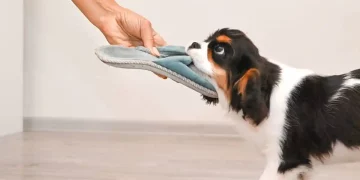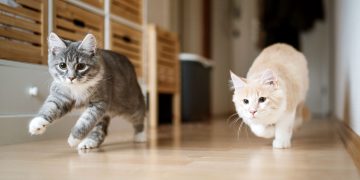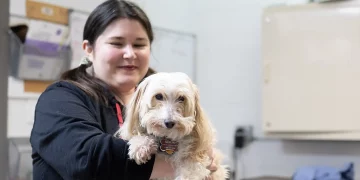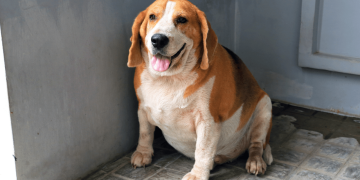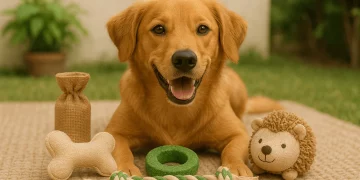Introduction: Understanding the Maltese Dog
The Maltese dog is a small, affectionate breed that has charmed pet owners around the world for centuries. Known for its silky, flowing white coat and lively personality, the Maltese has earned a reputation as an excellent companion dog. However, owning a Maltese comes with specific responsibilities, from grooming and feeding to training and health care. This article will provide a comprehensive guide to caring for a Maltese, ensuring that you are well-equipped to give your furry friend a happy, healthy life.
I. History and Origin of the Maltese Dog
A. Origins of the Breed
- Ancient Beginnings: The Maltese dog has a rich history that dates back over 2,000 years, believed to have originated in the Mediterranean region, specifically on the island of Malta.
- Role in Society: Historically, the Maltese has been a companion dog for royalty and nobility, valued for its beauty and temperament.
- Breed Recognition: The Maltese is recognized by major dog breed organizations, including the American Kennel Club (AKC).
B. The Maltese’s Unique Characteristics
- Physical Appearance: Maltese dogs are small but sturdy, with a long, white coat that is one of their defining features.
- Temperament and Personality: Known for being affectionate, playful, and loyal, the Maltese is an excellent family companion but can be sensitive and prone to anxiety.
II. The Maltese Dog’s Physical Characteristics
A. Size and Weight
- Standard Size: Typically weighing between 4-7 pounds, the Maltese is classified as a toy breed.
- Height: The typical height ranges from 7 to 9 inches at the shoulder.
B. Coat and Grooming Needs
- Type of Coat: The Maltese has a long, silky, non-shedding coat that grows continuously, requiring regular grooming.
- Grooming Routine:
- Brushing daily to prevent tangles and mats.
- Regular trims to maintain the coat’s health and manageability.
- Bathing every 3-4 weeks to keep the coat shiny and healthy.
C. Facial Features and Eye Care
- Distinctive Face: Maltese dogs have a cute, rounded face with large dark eyes, making them appear sweet and expressive.
- Eye Care: Maltese dogs are prone to tear staining. Discuss how to clean the area around the eyes and prevent or treat excessive tearing.
III. Training a Maltese Dog
A. Maltese Temperament and Trainability
- Intelligent but Independent: While Maltese dogs are smart and eager to please, they can also be a bit stubborn, which may make training challenging.
- Positive Reinforcement: Using rewards, praise, and treats during training is the most effective method for Maltese dogs.
B. Basic Commands and House Training
- Sit, Stay, Come: Tips on teaching these fundamental commands, which are especially important for a toy breed.
- Crate Training: The importance of crate training for potty training and for giving your dog a personal space.
- Potty Training: Maltese dogs can be prone to accidents, so patience and consistency are key. Indoor potty pads may be necessary in the beginning.
C. Socialization and Behavioral Training
- Importance of Early Socialization: Maltese dogs can be nervous around strangers and new environments. Early socialization is essential for building confidence.
- Preventing Behavioral Issues: Address issues like separation anxiety, excessive barking, and possessiveness over toys or food.
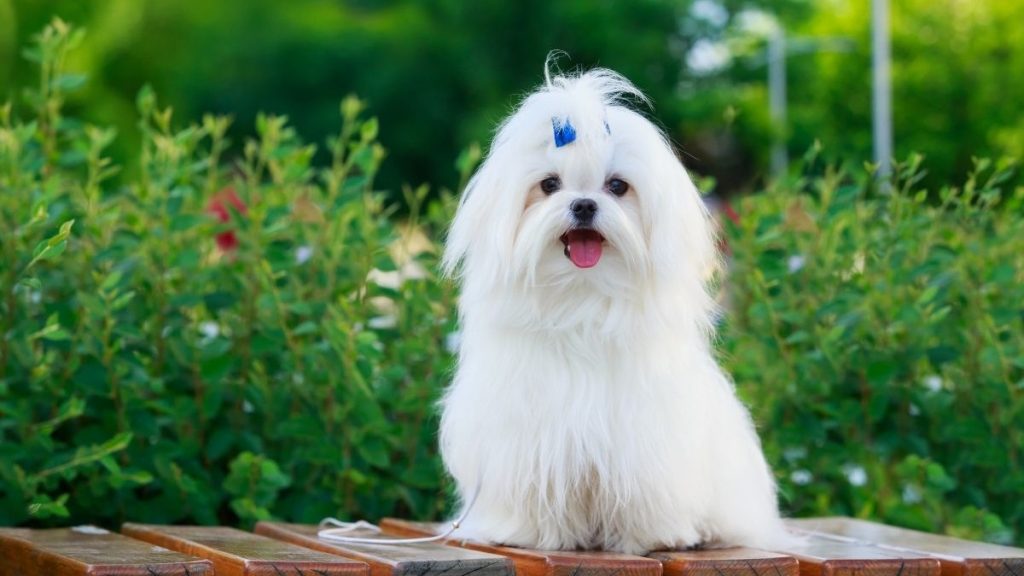
IV. Health Care and Wellness for Maltese Dogs
A. Common Health Concerns
- Dental Health: Maltese dogs are prone to dental issues like tartar buildup, so regular brushing and dental checkups are vital.
- Respiratory Problems: Due to their small size, Maltese dogs may have respiratory issues, such as tracheal collapse or reverse sneezing.
- Skin Issues: While Maltese dogs have a hypoallergenic coat, they can suffer from skin problems such as allergies or dermatitis.
- Joint Problems: As a small breed, Maltese dogs are prone to patellar luxation (knee dislocation), which may require surgery in severe cases.
- Heart Disease: Like many small breeds, the Maltese is susceptible to heart conditions, including mitral valve disease, as they age.
B. Regular Vet Visits
- Vaccinations: Keeping up with vaccinations for common diseases like rabies, parvovirus, and distemper.
- Parasite Prevention: Use of flea, tick, and heartworm prevention methods is crucial.
- Routine Health Checks: Regular checkups for dental exams, blood tests, and overall health monitoring.
C. Grooming and Bathing
- Bathing Routine: Discuss the importance of maintaining clean skin and coat, choosing the right shampoo, and how often to bathe.
- Ear and Eye Care: Regular inspection of ears and eyes to prevent infections and irritation.
- Nail Care: The importance of trimming nails regularly to avoid discomfort or injury.
V. Feeding and Nutrition for Maltese Dogs
A. Best Diet for Maltese Dogs
- High-Quality Commercial Dog Food: Discuss the benefits of choosing premium kibble or wet food formulated for toy breeds, ensuring balanced nutrition.
- Portion Control: Maltese dogs are prone to obesity, so portion control and monitoring calorie intake are essential.
- Raw or Home-Cooked Diet: While some owners opt for a raw or home-cooked diet, it’s important to ensure proper nutritional balance and consult with a vet.
B. Treats and Snacks
- Healthy Treats: Choose low-calorie treats to avoid overfeeding. Natural treats like carrots or special dog biscuits can be great options.
- Avoid Harmful Foods: Foods like chocolate, grapes, onions, and garlic should be strictly avoided.
C. Water Intake
- Hydration Needs: Maltese dogs are small, so they can become dehydrated quickly. Always provide access to fresh water.
VI. Exercise and Mental Stimulation for Maltese Dogs
A. Energy Levels and Exercise Requirements
- Daily Exercise Needs: Despite being small, the Maltese has a moderate energy level. Regular short walks (20-30 minutes) and playtime will keep them healthy and happy.
- Indoor Play Ideas: Since they are small dogs, they also enjoy indoor play, such as fetch or using interactive toys to keep their minds stimulated.
B. Mental Stimulation
- Puzzle Toys: Maltese dogs are intelligent and benefit from puzzle toys that challenge them mentally.
- Training Sessions: Regular training, such as teaching tricks, will keep your Maltese mentally sharp and engaged.
VII. Maltese Dogs and Family Life
A. Maltese as Companion Dogs
- Great for Families: Maltese dogs are excellent companions, especially for individuals or families with a laid-back lifestyle. They are particularly good with older children.
- Interaction with Other Pets: Discuss how Maltese dogs interact with other dogs and pets. They generally do well with other dogs if socialized early.
- Separation Anxiety: Being a companion breed, Maltese dogs may suffer from separation anxiety if left alone for long periods.
B. Maltese Dogs and Seniors
- Ideal for Seniors: Their small size and affectionate nature make Maltese dogs ideal for senior owners who may not be able to exercise larger dogs.
- Low Maintenance: While they need grooming, their exercise needs are minimal compared to larger breeds, making them easier to manage for older adults.
VIII. Traveling with Your Maltese Dog
A. Traveling by Car
- Safety Measures: Always secure your Maltese in a pet carrier or use a dog seatbelt harness during car trips to prevent injury.
- Comfortable Travel: Bring along water, snacks, and familiar toys to keep your Maltese comfortable during long drives.
B. Traveling by Air
- Airline Pet Policies: Discuss guidelines for flying with a Maltese, including size restrictions and proper preparation for travel.
- Preparation for the Flight: Consider the temperature, cabin conditions, and the Maltese’s comfort during the flight.
IX. The Lifespan and Aging Process of Maltese Dogs
A. Average Lifespan
- How Long Do Maltese Live?: Discuss the average lifespan of Maltese dogs (12-15 years) and factors that can influence their longevity.
- Senior Care: As Maltese dogs age, their needs change. Regular vet visits, special diets, and adjusting exercise routines are necessary to ensure their quality of life.
B. Signs of Aging
- Changes in Behavior: Reduced activity, changes in eating habits, or difficulty moving around are common signs of aging in Maltese dogs.
- Managing Senior Health: Senior Maltese dogs may require more frequent vet visits, joint supplements, or a diet specifically designed for older dogs.
X. Conclusion: The Maltese Dog as a Loving Companion
The Maltese dog is a delightful companion that offers loyalty, affection, and joy to its owners. While they do require specific care, such as grooming, training, and attention to health, the effort is well worth it. With the right care, a Maltese dog can be a loving member of the family for many years. Whether you are a first-time dog owner or experienced with small breeds, this guide provides everything you need to ensure your Maltese thrives.


